
Clownfish certainly have a striking appearance, but there are many other incredible facts about them!
©Alex Stemmers/Shutterstock.com
Anemonefish, more commonly known as clownfish, are seafish that are a part of the Amphiprioninae subfamily. They have a wide variety of colors and sizes and are found in warmer waters and coral reefs. These fish are not only strikingly beautiful, but they also have a lot of amazing facts about them that many people aren’t even aware of! Let’s explore 10 incredible Clownfish facts!

1. There are 30 Different Species

While the most well-known type of clownfish has an orange body with white stripes, there are many assorted colors across this subfamily like the pink skunk clownfish (
Amphiprion perideraion).
©iStock.com/hansgertbroeder
Clownfish belong to a subfamily of about 30 different species. While the most well-known type of clownfish has an orange body with white stripes, there are many assorted colors across this subfamily. They range anywhere from yellow to blue, to red, to black, to even white with spots! Their colors and patterns will often depict the subspecies; however, all these varieties are still classified as the well-beloved clownfish.
2. They Form Symbiotic Relationships With Sea Anemones
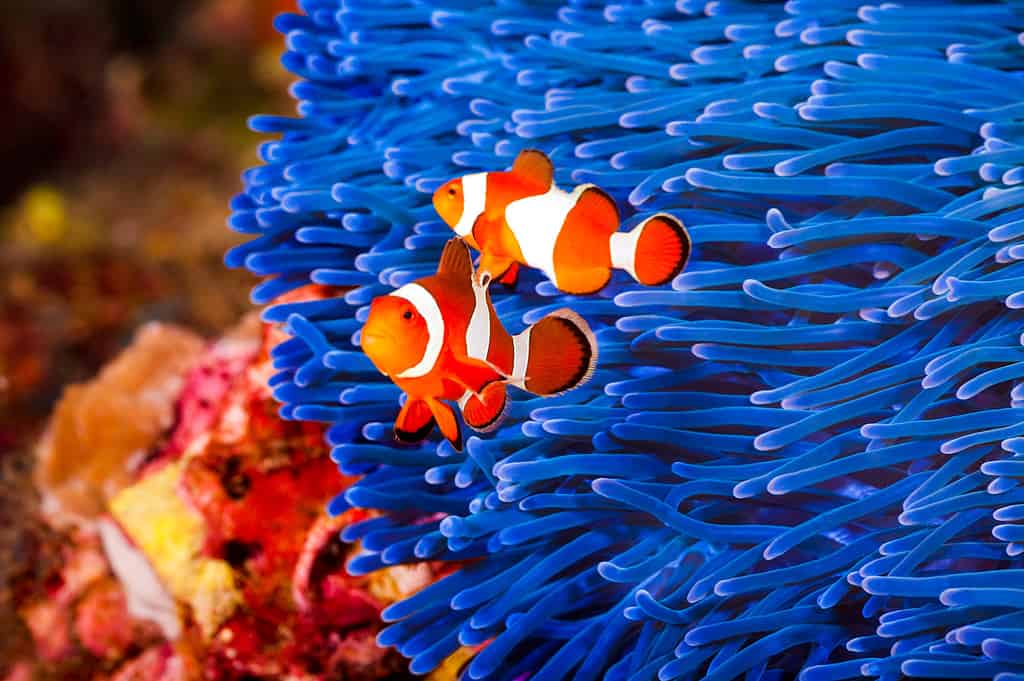
Sea anemones and clownish share a symbiotic relationship in which each creature benefits.
©iStock.com/Aneese
All clownfish reside in sea anemones. In fact, Clownfish form symbiotic relationships with sea anemones to create their homes and nests. They form this mutual relationship because they benefit from one another. For example, the clownfish helps the sea anemone to be parasite-free and provides the anemone with food. Since the clownfish provides these things for the anemone, the chosen anemone will allow the clownfish to use its space for safety against predators. To protect the clownfish from the anemone’s harmful stings, a mucus layer builds around the fish. This begins a safe, symbiotic relationship for the two.
3. They Are Very Social

When paired, clownfish form particularly close bonds with whoever they choose to mate with.
©Kurit afshen/Shutterstock.com
Apart from having symbiotic relationships with sea anemones, clownfish are very social creatures in general. These fish live in large groups of male fish that contain a dominant female and a dominant male. They communicate through a series of popping and clicking noises, which they use for both defense and to declare their social status within the group. When paired, clownfish form particularly close bonds with whoever they choose to mate with.
4. All Clownfish Are Born Male
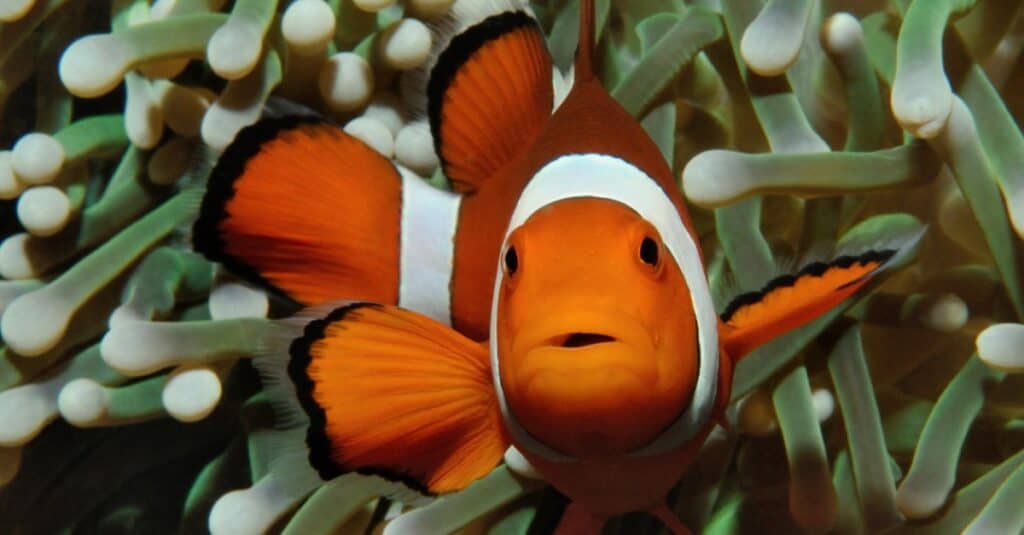
Male clownfish take the primary role in nursing eggs.
©Oksana Golubeva/Shutterstock.com
Clownfish are hermaphrodites, meaning they contain both male and female reproductive organs. In fact, when clownfish hatch from their eggs, all of them are born male. Out of the freshly laid group, the largest fish will become the dominant female. The second largest fish will become the dominant male. If the dominant female dies within the school of fish, the dominant male will then switch sexes and become the dominant female!
5. They Are Omnivores
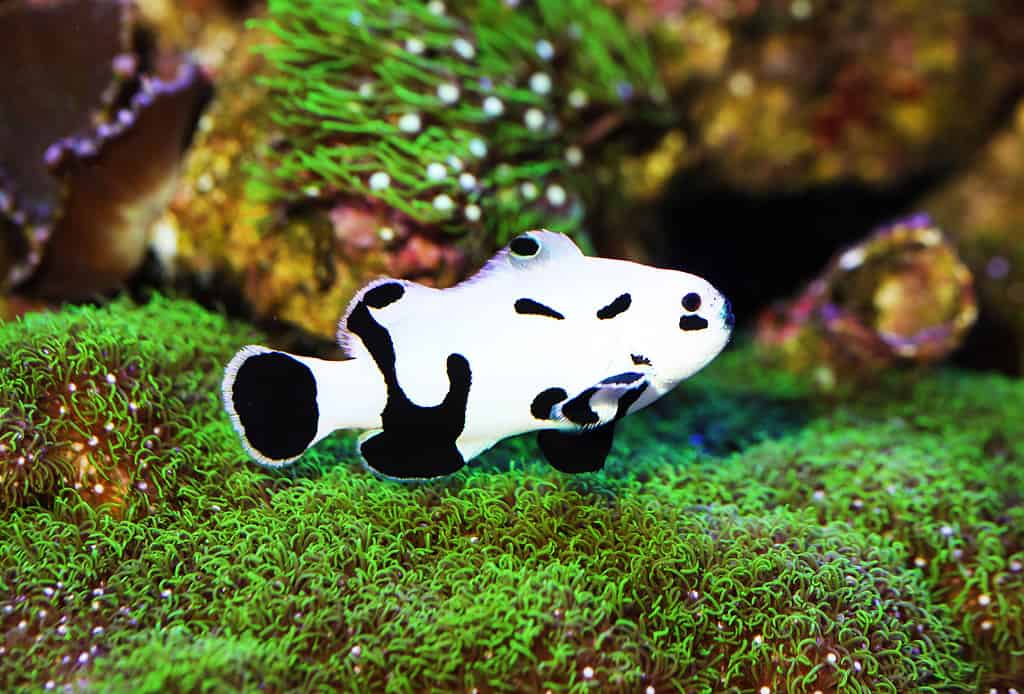
While they commonly eat both algae and sea scraps that their anemone leaves behind, they can also be found eating other small invertebrates.
©Pavaphon Supanantananont/Shutterstock.com
Clownfish are omnivores, meaning that they eat both vegetation and other forms of fish. While they commonly eat both algae and sea scraps that their anemone leaves behind, they can also be found eating other small invertebrates. This ranges from zooplankton, worms, fish eggs, and small crustaceans such as shrimp.
6. They Are Not Found In The Atlantic Ocean

Clownfish aren’t found in the Atlantic but in the warmer waters of the Red Sea, Pacific Ocean, and Indian Ocean.
©Myroslava Bozhko/Shutterstock.com
Although all clownfish belong to oceans, they cannot be found in the Atlantic Ocean. Clownfish are found in the warmer waters of the Red Sea, the Pacific Ocean, the coral reefs of the Indian Ocean, and in the offshore waters near Japan and Australia. Apart from the Atlantic, they are also not found in both the Caribbean and the Mediterranean Sea. The most common ocean you can find clownfish in would be the Indian Ocean. However, they also largely inhabit coral reefs.
7. They Live Longer In The Wild

Clownfish thrive in the wild and tend to live shorter lives in captivity.
©Tareq.n.o/Shutterstock.com
While some animals tend to live longer in captivity due to extra care, this is not the case for clownfish. In fact, it is more common for a clownfish to live longer in the wild than it is in captivity. On average, a wild clownfish can live anywhere from 6 to 10 years. However, a clownfish that is held in captivity usually lives from 3 to 6 years. Wild-caught clownfish that are then put in captivity tend to die sooner due to the stress of catching and transporting.
8. They Were Named Clownfish Mostly Because Of Their Behavior
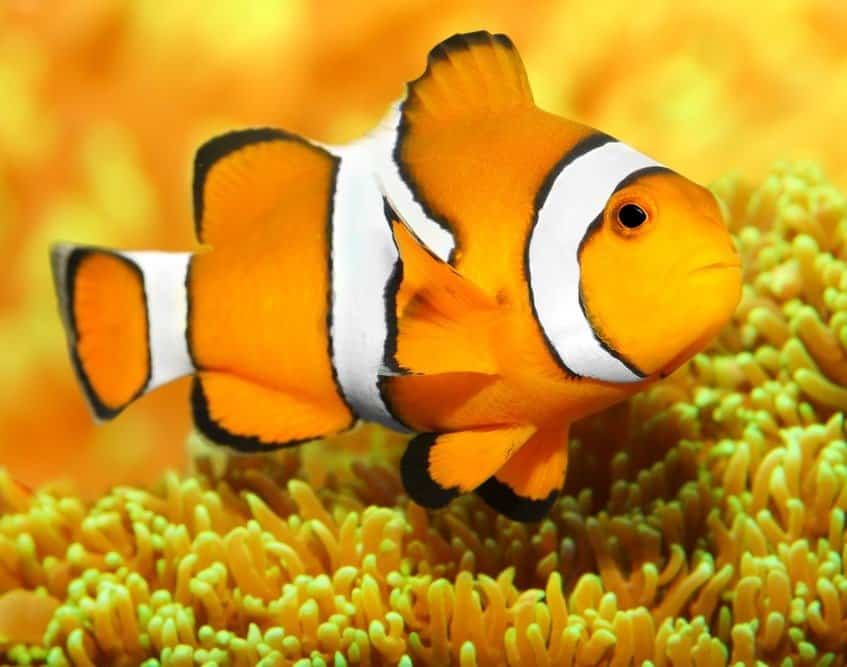
Clownfish aren’t named for their vibrant colors, but for their erratic swimming when defending their territories.
©Kletr/Shutterstock.com
While many people think clownfish got their name strictly because of their colors, this is not the case. Instead, it is mostly because of their personalities and behaviors. Clownfish are very territorial fish and will defend both their habitat and their school. They will begin to swim around erratically in their defense, which often looks quite silly. This quirky behavior is really what gave them their unique name!
9. They Lay Hundreds Of Eggs

Male clownfish take the primary role in nursing eggs.
©Oksana Golubeva/Shutterstock.com
On average, a dominant female clownfish will lay anywhere from 100 to 1,000 eggs. Although, the median amount is usually said to be around 600. Once the eggs are laid, the female will swim off, leaving the dominant male to do the egg sitting. If he finds that any eggs are infertile or damaged in any way, he will eat them. This is nothing like the well-beloved movie Finding Nemo! Once the eggs are hatched, they are no longer reared or raised by their parents. Instead, they are then sent out to start their own journey. However, they will almost always stay within their own school.
10. The Two Most Known Clownfish Are The Ocellaris Clownfish And Clarks Anemonefish
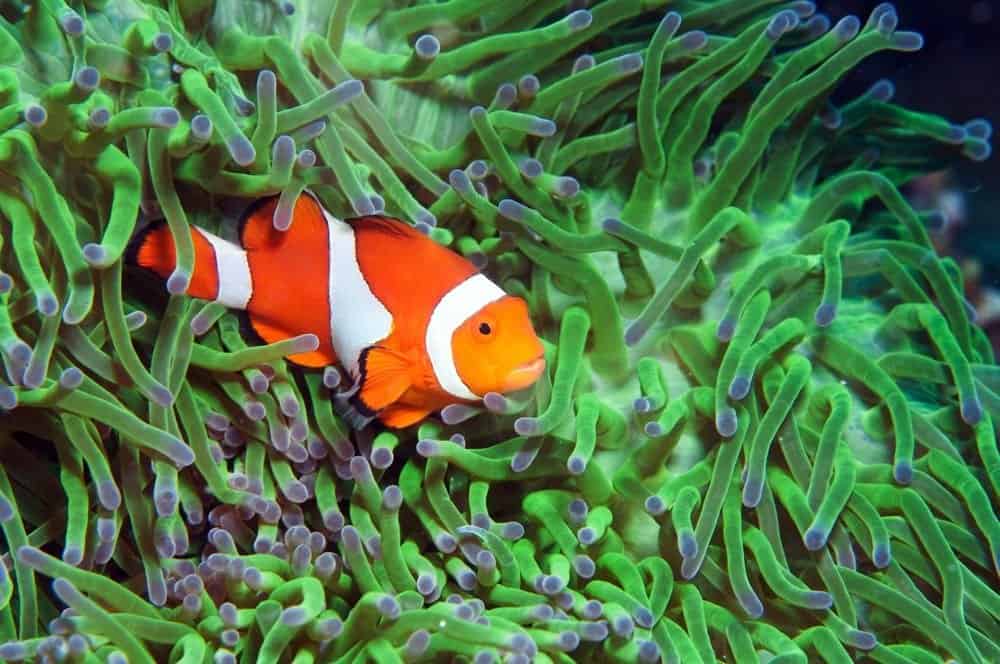
The common clownfish, ocellaris clownfish, is the most well-known species.
©Jung Hsuan/Shutterstock.com
While there are many different subspecies of clownfish, there are two species that are the most common or popular. The ocellaris clownfish is the orange clownfish with white stripes, also known as the common clownfish. This clownfish is often confused with the orange clownfish because of their close colors and stripes. However, the orange clownfish is usually distinguished by the black bands that outline its three white stripes.
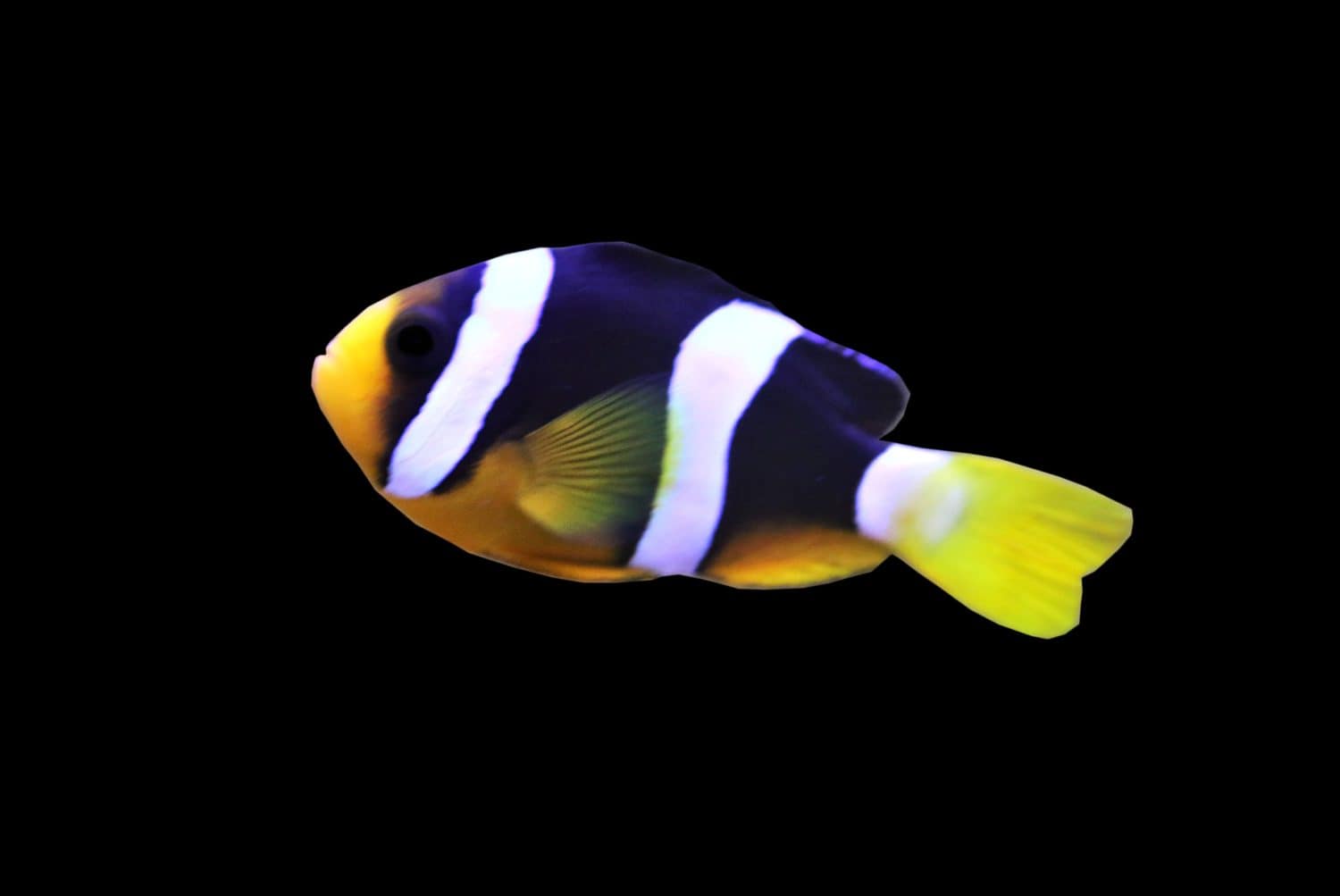
The Clarks anemmonefish features bright black, white, and yellow stripes.
Image: Arunee Rodloy, Shutterstock
©Arunee Rodloy/Shutterstock.com
The Clarks anemonefish, often known as the yellowtail clownfish, is another popular clownfish. Pomacentridae is the family name for this marine fish. It has a hefty build, is compressed laterally, and is oval to rounded in shape. It’s bright and cheerful, with bright black, white, and yellow stripes. However, the specific pattern varies greatly from place to place.
Bonus: Clownfish May Be Able to Count

Clownfish are thought to count the vertical white stripes on fish to determine if they are friend or foe.
©engabito/iStock via Getty Images
Clownfish are notoriously territorial and are among the most aggressive fish on the planet. They are especially aggressive toward intruders of their own kind while they may allow other fish to enter their territory unchallenged. Because scientists have noticed that clownfish allow other striped fish to swim freely while they attack their fellow clownfish – research was conducted to learn how clownfish recognize members of their own species. According to the Journal of Experimental Biology, new research indicates that clownfish actually count the white vertical stripes on fish to determine if a fish is friend or foe.
The photo featured at the top of this post is © JennyHuang / Creative Commons / Original
Thank you for reading! Have some feedback for us? Contact the AZ Animals editorial team.






